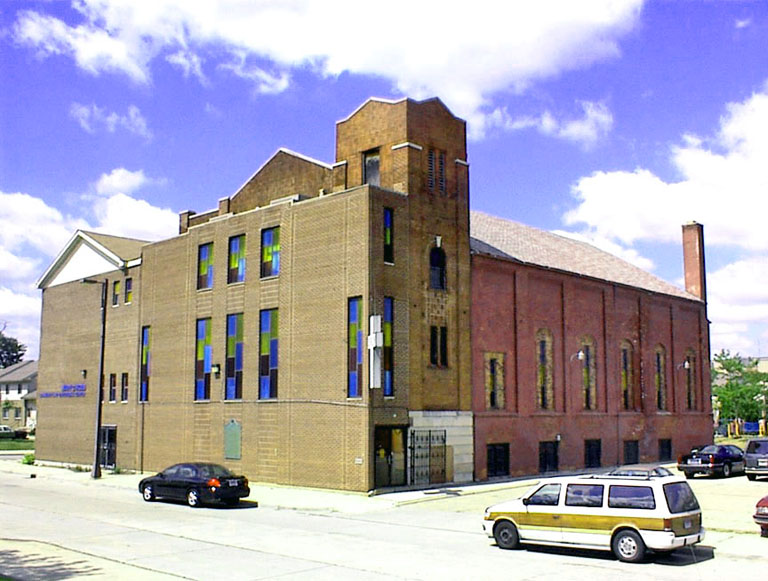
Greater Shiloh Baptist Church/
Greater Shiloh Baptist Church Local Historic District
557 Benton in the Brewster Housing Complex near Brush Park in Detroit
Greater Shiloh is the second oldest African-American
Baptist congregation in Detroit. It was founded in 1881 by the Reverend John
Wills. The oldest black Baptist congregation in the city is Second
Baptist founded by former slaves in 1839 and now located on Monroe in Greektown.
The church at the Benton Street site was designed by a black draftsman, Carlos N. Stokes, making him, perhaps, the first Detroit African American to draw up the architectural plans for a church. He did so in 1920, but this church was not completed until 1926 when the congregation moved from their previous church in the Eastern Market area near the intersection of Russell and Gratiot.
The housing problems of destitute urban residents were tremendous in the Depression. To solve those problems and create jobs, the federal government began building large public housing projects. Brewster was the nation's first. Indeed, the president's wife—Eleanor Roosevelt—came to Detroit to help turn the first sod. The federal government, at that time and for about 30 more years, built public housing on a Jim Crow basis. Brewster was located within or close to the neighborhoods along Hastings where most blacks had been confined since their arrival in the city in large numbers during World War I.
Greater Shiloh's pastor—Reverend Solomon Ross—fought the federal government's attempt to raze his church. He succeeded in his fight and this explains the seemingly unusual location of the church within the Brewster Project.
The church is a large, redbrick, one-story building resting upon a concrete pod with limestone trim. In the front, a major addition was constructed in 1978. This is a large and imposing, but not very attractive, two-story brick entryway with a flat root. Vertical windows with impressive enframements are components of the entryway and are quite colorful in the summer sunlight. In the Eric Hill, John Gallagher book, AIA Detroit: The American Institute of Architects Guide to Detroit Architecture (Wayne State University Press, 2003) you will find a sketch of the original entrance designed by Carlos Stokes. It is a classical church entrance strongly influenced by traditional European church architecture. Personally, I think the 1978 addition hid an attractive front.
After the Israelites escaped from Egypt, God parted the Red Sea so they could cross safely. Shiloh was the first place of prayer that God provided for the Israelites in the Promised Land. Shiloh is an ancient village northwest of the Dead Sea in Palestine. It was a meeting place and sanctuary for the Israelites after their departure from Egypt.
This local historic district includes just the Greater Shiloh Baptist Church located at 557 Benton in Detroit.
Designer: Carlos N. Stokes
Architectural firm: W. W. Ahlschlager, Inc.
Date of Completion: 1926
Architects for the 1978 Remodeling: Architects International
City of Detroit Local Historic District: Listed December 14, 1990
State of Michigan Registry of Historic Sites: P4534, Listed January 19, 1989
Local District: November 28, 1990
State of Michigan Historic Marker: Erected 1994. This is visible on the entryway
to the Church.
National Register of Historic Sites: Not listed
Use in 2003: Church
Photo: Ren Farley; July, 2003
Return to City of Detroit Historic Designations